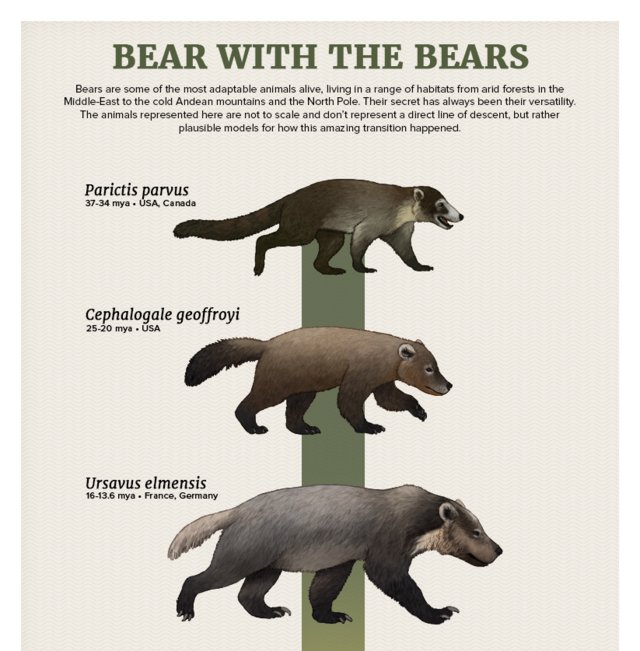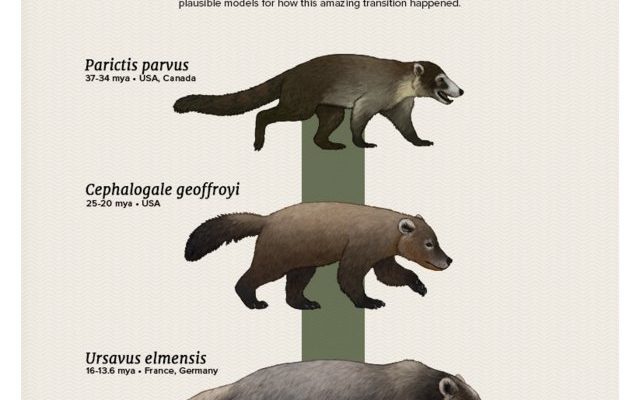
Imagine sitting down with a cup of coffee, discussing this bear that roams the Andes mountains and cloud forests. As we sip, you might wonder how this unique bear came to be, what its ancestors were like, and how it fits into today’s ecosystem. Honestly, the story of the spectacled bear is as intriguing as its appearance. Let’s dive into its evolutionary journey and learn why this bear matters to our planet.
Origin of Spectacled Bears
The story of spectacled bears begins millions of years ago. Bears, as a family, emerged from ancient carnivorous mammals in the late Eocene epoch (about 56 to 34 million years ago). The spectacled bear’s ancestors branched off from the rest of the bear family, the Ursidae, around 10 million years ago. This separation marked the start of a unique evolutionary path.
As these bears migrated across the continents, they adapted to various environments. The ancestors of the spectacled bear specifically began to adapt to the Andean region’s diverse habitats, including montane forests and grasslands. Here’s the thing: the conditions were not just right for bears; they were perfect for a whole new species to develop. Over time, natural selection favored traits that would allow them to thrive in this challenging landscape.
Interestingly, the spectacled bear shares some genetic connection with the short-faced bears, which were larger and lived during the Pleistocene. You might be wondering how these giants relate to today’s playful and much smaller spectacled bear. Well, their lineage shows that adaptability is key in evolution. The bears that could best utilize local food sources, like fruits and vegetation, thrived and survived.
Physical Traits and Adaptations
Spectacled bears are recognized for their distinctive appearance. Their unique facial markings resemble glasses, which is why they earned the name “spectacled.” These lighter patches help other bears identify them within their misty forest homes.
But their adaptations go beyond just looks. Spectacled bears have strong, curved claws perfect for climbing trees. This talent is crucial since they often forage in the treetops for fruits, leaves, and even the occasional hive. Honestly, can you picture them scaling a tree, clumsily reaching for a juicy fruit? It’s a sight to behold!
Their diet is primarily herbivorous, consisting of around 90% vegetation. This trait is vital because food sources in their habitat can be scarce at times. By evolving to consume a variety of plant-based foods, spectacled bears reduce competition with other predators and increase their chances of survival. These adaptations make them a fascinating subject in the study of evolution and survival strategies within changing ecosystems.
Habitat and Distribution
Spectacled bears primarily inhabit the Andes mountains and surrounding regions, including parts of Colombia, Venezuela, Ecuador, Peru, and Bolivia. This mountainous landscape provides a mix of habitat types, from humid cloud forests to dense montane jungles.
What’s especially interesting is how these bears have adapted to such varied environments. In some areas, they may wander through dense foliage, while in others, they navigate rocky terrains. This adaptability shows their evolutionary resilience. You might say they’re the ultimate survivors of South America’s diverse ecosystems.
Unfortunately, their habitat is threatened due to deforestation and human expansion, which limits their range. With fewer trees to climb and forage, these bears face challenges in finding food and mates. As their habitats shrink, understanding their evolutionary history becomes even more critical. Protecting their environment is key to ensuring their survival for future generations.
Behavior and Social Structure
When it comes to personality, spectacled bears are generally described as solitary creatures. They prefer to roam alone, except during mating season or when mothers care for their cubs. You might think of them as the introverts of the bear world, comfortable in their own space.
During mating season, males will often roam larger territories to find a mate, while females will nurture their cubs for several months. A mother will typically give birth to one or two cubs, and she plays a crucial role in teaching them survival skills. Imagine a mother bear patiently showing her cubs how to climb trees and find food; it’s a beautiful sight in nature.
Their solitary nature doesn’t mean they aren’t social in their own way. Spectacled bears communicate through sounds, scents, and markings. These interactions help maintain their territory and avoid conflicts with others. Even in solitude, their presence shapes the dynamics of their ecosystem, highlighting the balance of life in the Andes.
Conservation Status and Threats
As unique as the spectacled bear is, it faces numerous threats. The IUCN Red List classifies them as vulnerable, primarily due to habitat loss and fragmentation. Human activities, such as agriculture and urban development, have led to significant deforestation in their range, pushing these bears into smaller habitats.
On top of habitat destruction, climate change poses a severe risk. Changes in temperature and rainfall patterns can impact the availability of their food sources. You might be wondering, “What can we do to help?” Well, awareness and conservation efforts are crucial. Protecting their habitats and ensuring they have enough food and space is vital for their survival.
Organizations and local governments are working together to create protected areas and corridors that allow these bears to roam freely. By promoting sustainable practices and raising awareness, we can help secure a future for the spectacled bear. After all, if we lose them, we lose a piece of the intricate tapestry that makes up our planet’s biodiversity.
The Future of Spectacled Bears
The future of spectacled bears hinges on our actions today. As awareness about their plight grows, conservation efforts are intensifying. Many organizations focus on habitat restoration, community education, and wildlife protection. These initiatives encourage local communities to engage in sustainable practices that benefit both humans and bears.
Here’s the thing: every little bit counts. Whether it’s supporting conservation groups or spreading the word about the importance of protecting these bears, there are ways to get involved. You might not realize it, but your actions can have a ripple effect that helps change the future for these unique creatures.
Understanding the evolutionary history of the spectacled bear helps emphasize its role in the ecosystem. By learning about their history, adaptations, and the challenges they face, we can appreciate why protecting them is essential. Preserving their habitat allows them to thrive and continue their fascinating journey in our world.
In conclusion, the spectacled bear is more than just an animal with unique facial markings; it’s a symbol of resilience and adaptation. Their evolutionary journey is a testament to the beauty and complexity of nature and reminds us of the urgent need to protect our planet’s diverse species. Let’s ensure that future generations can also enjoy the wonder of this remarkable bear roaming the Andes.

